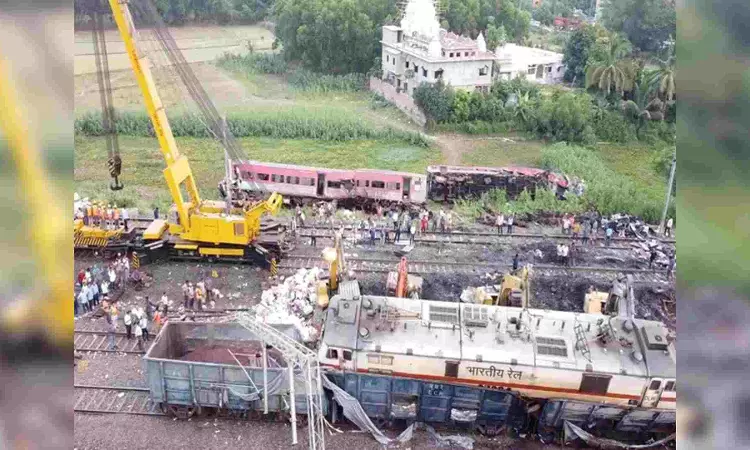Tragedy on tracks
The nation has witnessed several large-scale mishaps over the years. Back in June 1981, seven bogies of a train plunged into the Baghmati river in Bihar, following torrential rains, which led to over 800 deaths.

Visuals from accident site in Odisha's Balasore (Photo:ANI)
The toll in the three-train mishap at Bahanaga Bazar Station in Odisha touched 275, with over 1,000 people injured and a preliminary probe implying the possibility of human error, signal failure and other causes in the deadliest railway tragedy in 30 years. The nation has witnessed several large-scale mishaps over the years. Back in June 1981, seven bogies of a train plunged into the Baghmati river in Bihar, following torrential rains, which led to over 800 deaths. In August 1995, around 300 people lost their lives as the Delhi bound Purushottam Express collided with a stationary train near Firozabad. Then, in August 1999, a head-on collision between two trains in Uttar Dinajpur, West Bengal killed 287 people. With such a history trailing the Railways, millions still bank on India’s largest public sector undertaking for their mobility needs. But, the question of safety has not been adequately addressed.
The Railways experimented with three different safety mechanisms in the last decade and a half, but none of them have been implemented satisfactorily. The signal-based Train Protection Warning System, which allows the engine to automatically apply brakes if loco pilots over-speed or jump signals, was shelved upon the recommendation of a high level panel. The committee instead recommended an anti-collision system. An Auxiliary Warning System to be fitted ahead of signals to warn about collisions also failed to take off. Later, the indigenously developed Kavach (anti-collision system) had undergone pilot trials, but was rolled out for just 2% of India’s rail network. Currently, the anti-collision system has been implemented only in two major routes — Delhi-Kolkata, and Delhi-Mumbai. Even if trains were equipped with this system, experts opine that it couldn’t have averted the crash on Friday as the Coromandel Express was running at more than 120 km/h, and had suddenly entered the loop line, which would have made it impossible to apply the automatic brakes in time. Senior officials had also issued warnings on the railway signalling system, specifically regarding the bypassing of the electronic interlocking system.
The Comptroller Auditor-General of India in a report on Derailments in Indian Railways (2022) had highlighted multiple shortfalls and included suggestions to ensure strict adherence to scheduled timelines for conducting and finalising accident inquiries. The audit’s focus was to ascertain if the Railways had laid down and executed measures to prevent derailments and collisions. As per auditors, there were shortfalls ranging from 30% to 100% in inspections conducted by track recording cars, as well as idling of track machines owing to various causes. A total of 422 derailments were attributable to the Engineering Department, while the major factor responsible for derailment was related to track maintenance, followed by deviation of track parameters beyond permissible limits.
As per a government railway safety report for 2019-20, derailments caused 70% of accidents, followed by train fires and collisions. Ironically, the bulk of public discourse surrounding the Railways is pertaining to the Vande Bharat trains. The euphoria around them has sidelined the serious challenges facing the Railways. The government has already eliminated a separate Railway budget and merged it with the general budget. There has been a spike in investments through institutional borrowings too. But we have miles to go in metrics such as punctuality, safety, financial and physical performance, customer experience, project execution and human resource concerns, among others. High speed, fancier trains, remodelled stations and platforms might not really cut it, when fundamentals like basic safety and infrastructural concerns are thrown to the wind.



